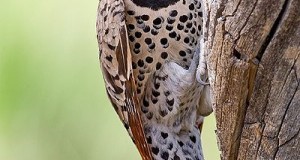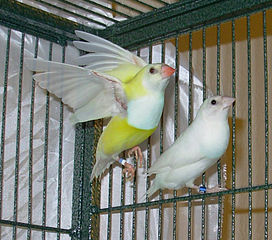 Parrot conservation news has been somewhat dismal lately (please see here for some examples), so today I’d like to highlight a bright spot. Surveys have shown that Bolivia’s Barba Azul Reserve supports a breeding population of Blue-Throated Macaws (Ara glaucogularis), a species so rare that it was believed extinct until its “re-discovery” in 1992. Maned Wolves, Orinoco Geese, Bush Dogs, Pampas Deer and other rare animals are also making themselves at home in the reserve’s 12,300 acres.
Parrot conservation news has been somewhat dismal lately (please see here for some examples), so today I’d like to highlight a bright spot. Surveys have shown that Bolivia’s Barba Azul Reserve supports a breeding population of Blue-Throated Macaws (Ara glaucogularis), a species so rare that it was believed extinct until its “re-discovery” in 1992. Maned Wolves, Orinoco Geese, Bush Dogs, Pampas Deer and other rare animals are also making themselves at home in the reserve’s 12,300 acres.
Wildlife Oasis amid Ranches
Managed by the World Land Trust, Barba Azul Reserve is comprised of tropical savannas, “forest islands” and marshes. I had the good fortune to work in a similar area inVenezuela, and can attest to the incredible diversity of wildlife that such habitats support. As was true for protected areas in Venezuela, Barba Azul is surrounded by huge cattle ranches.
While ranch owners often protect wildlife (I and colleagues marked over 500 Green Anacondas on a single ranch inVenezuela!), water management practices and fires lit to burn off dead grass threaten the animals that congregate in nearby reserves. At Bara Azul, extensive firebreaks have been constructed to protect the area.
One of the World’s Rarest Parrots
Clad in brilliant turquoise and yellow, the huge Blue-Throated Macaw is found only in northern Bolivia. Believed extinct until 1992, it is classified as Critically Endangered by the IUCN and listed on CITES Appendix I.
Up to 110 individuals occupy or use Barba Azul Reserve, the only such concentration known to exist. At least 7 pairs are raising chicks. Outside of the reserve, Blue-Throated Macaw sightings are limited to pairs or single birds that occupy cattle ranches separated from one another by hundreds of miles. In such circumstances, viable breeding populations will not likely become established.
Other Notable Reserve Residents
 A number of other creatures that are uncommon in the surrounding area, including Giant Anteaters and Marsh Deer, have established themselves at Barba Azul reserve. The presence of a wide variety of predators, including Maned Wolves, Jaguar, Jaguarundi, Bush Dogs (see photo) and Puma indicates that a complex, functioning ecosystem is in place.
A number of other creatures that are uncommon in the surrounding area, including Giant Anteaters and Marsh Deer, have established themselves at Barba Azul reserve. The presence of a wide variety of predators, including Maned Wolves, Jaguar, Jaguarundi, Bush Dogs (see photo) and Puma indicates that a complex, functioning ecosystem is in place.
This bodes well for the Blue-Throated Macaw’s future, although species that survive in one location only are considered to be extinction-prone. Other rare birds that have been documented breeding within the reserve include Orinoco Geese, Black-Masked Finches and Short-Tailed Tyrants.
Further Reading
Blue-throated Macaw videos and info
Conserving the Blue-throated Macaw
World Land Trust and other noted conservation organizations; useful overview
Blue Throated Macaw image referenced from wikipedia and originally posted by Jeff Kubina
Bush Dog image referenced from wikipedia and originally posted by Paul Reynolds
 That Bird Blog – Bird Care and History for Pet Birds
That Bird Blog – Bird Care and History for Pet Birds



